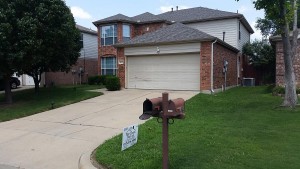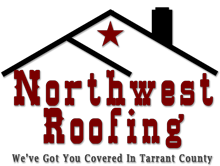13 Easy Home Tips to Prepare Your Home for Winter
Ah, it is finally September! The weather will be cooling and the leaves will begin to turn color. Slowly we will creep into Fall and then Winter will arrive and linger. This is an important time of the year because if you are a Homeowner, you will want to begin to think about and plan how to protect your home during the harsh cold months. The following 13 easy home tips will help you plan and winterize your home this year and every year. 
Easy Home Tip 1
Find Any Air Leaks
One of the best ways to winterize your home is to simply block obvious leaks around your house. A simple way in finding leaks within your home is to light a candle and walk around in the draftiest areas such as window and doorframes, recessed lighting and electrical outlets. While standing still, watch the candle’s flame to see if there is a place where air is leaking into your home. If there is air coming through, the flame will be dancing. Be careful not to burn yourself with the candle or drop any wax on your floor or furniture.
If you do find a leak around doors or windows then you should add caulk or installation made for doors and windows to keep the air out.
If you do find a leak around doors or windows then you should add caulk or installation made for doors and windows to keep the air out.
Outlet gaskets can easily be installed in electrical outlets that share a home’s outer walls, where cold air often enters.
Easy Home Tip 2
Install a Programmable Thermostat
If your home does not already have a programmable thermostat, now is a good time to have one installed or install it yourself. A programmable thermostat can be set to automatically adjust your home’s temperature when you are away or sleeping, which can save on both heating and cooling costs.
Easy Home Tip 3
Reverse Your Ceiling Fans
By reversing the ceiling fan’s direction, the fan will push warm air downward and force it to recirculate, keeping the environment more comfortable. Here is an easy way to tell if your ceiling fan is correctly adjusted for winter. As you look up at your ceiling fan, the blades should be turning clockwise.
Easy Home Tip 4
Install a Carbon-Monoxide Detector
Every home should have at least one Carbon-Monoxide Detector. Carbon monoxide (CO) is a poisonous gas that kills approximately 500 people in the United States alone every year. Consumer products like a stove or water heater that emit CO kill about 200 people of that number. You cannot hear, taste, see or smell carbon monoxide, giving it the nickname the “silent killer,” because it sneaks up on its victims and can take lives without warning.
When shopping for a Carbon-Monoxide Detector look for the UL Mark with the adjacent phrase “Single Station Carbon Monoxide Alarm.” UL Listed CO alarms are designed to detect elevated levels of CO and sound an alarm to alert you and your family of a potential poisoning risk. Although CO indicator cards and other devices on the market are also intended to detect elevated levels of CO, most are not designed with an audible alarm. The presence of an audible alarm is significant especially while you and your loved ones are asleep.
UL Listed CO alarms are required to have a manually operated alarm reset/silence button that will allow you to silence the alarm signal. If elevated levels of CO continue to exist, the alarm will sound again in six minutes.
Easy Home Tip 5
Check Your Fire and Smoke Detectors
Fall time is a great time to remember to check the operation of all of your home’s fire and smoke detectors and to change the batteries. A general rule is that home fire and smoke alarm detectors should be replaced every 10 years. You can test them especially the older ones, with a small bit of actual smoke and not just by pressing the “test” button.
In addition, every home should have a fire extinguisher handy. Keep it in a place where everyone knows where it is and can grab it if an emergency arises. Instruct everyone how to use the fire extinguisher. You should also test it to ensure that it still works.
Easy Home Tip 6
Check Your Attic’s Installation
Adding insulation to the existing insulation in the attic isn’t expensive and is well worth the effort. General rule is that you need
a minimum of 12 inches of insulation in your attic. When you go into your attic, look to see if you can see the ceiling joists. If you can see them, you don’t have enough installation, because a ceiling joist is at most 10 or 11 inches.
If you’re layering insulation atop other insulation, don’t use the kind that has a paper backing. It acts as a vapor barrier and can cause moisture problems in your insulation.
Easy Home Tip 7
Clean the Gutters
Once the leaves fall, remove them and other debris from your home’s gutters then follow up with a hose rinse. This will help in keeping rain and melting snow drain out. As you’re hosing out your gutters, look for leaks and misaligned pipes. Also, make sure the downspouts are carrying water away from the house’s foundation, where it could cause flooding or other water damage.
Outside, seal leaks with weather-resistant caulk. For brick areas, use masonry sealer, which will better stand up to freezing and thawing. A small crack is worth sealing up and discourages insects and tiny critters from entering your home.
Easy Home Tip 8
Look at Your Roof
Walk around your house and carefully look at your roof. Notice if there are any shingles missing, out of place or may be damaged. You will want to get those shingles replaced immediately so that you won’t incur any leaks or water damage in your home.
Easy Home Tip 9
Check the Furnace
Turn your furnace on to make sure it’s even working, before the coldest winter weather hits. Don’t be alarmed if you can smell a strong smell when first turning on your furnace. This is normal but if the smell lasts a long time, turn off the furnace and call a professional to inspect it. It’s a good idea to have furnaces cleaned and tuned annually.
Throughout the winter you should change your furnace filters regularly so be sure to check them monthly. A dirty furnace filter can stop air flowing and reduce the efficiency of your furnace. There is a possibility that a dirty filter could even cause a fire in an extreme case. Toss out the dirty fiberglass filters and buy reusable electrostatic or electronic filters that can be washed and used again.
Easy Home Tip 10
Check The Ductwork
According to the U.S. Department of Energy, a home with central heating can lose up to 60% of its heated air before that air reaches the vents if ductwork is not well connected and insulated, or if it must travel through unheated spaces. That’s your wasted money along with a chilly house.
You can find ductwork exposed in the attic, the basement and crawlspaces. Repair places where pipes are pinched, which slows the flow of heated air to the house, and fix gaps with a metal-backed tape.
Ducts also should be vacuumed once every few years, to clean out the abundant dust, animal hair and other dust that can gather inside them and cause respiratory problems. Read more about duct cleaning at EPA.
Easy Home Tip 11
Consider Adding Storm Windows
Storm Windows can provide an extra layer of protection and warmth for your home. Storm windows are particularly helpful if you have old, single-pane glass windows. If you don’t have storm windows, and your windows are leaky or drafty, then you should update to a more energy efficient window.
Easy Home Tip 12
Don’t Forget To Inspect Your Chimney
Your chimney should at least be inspected before use every year. You can hire a Chimney Sweep to clean your chimney but it’s not necessary every year but it should definitely be inspected. Chimneys tend to catch all kinds of debris from bird nests to dead birds to toys. You can purchase protective cap for your chimney, with a screen that will help keep foreign objects out as well as rain that can mix with the ash and eat away at your chimney’s walls.
If you hire a Chimney Sweep, ask for a Level 1 Chimney Inspection, in which the professional examines the readily accessible portions of the chimney. Most certified Chimney Sweeps include a Level 1 service with a sweep.
Find out more information from Chimney Safety Institute of America.
Easy Home Tip 13
Wrap the Pipes Before A Freeze
A burst pipe caused by a winter freeze is a nightmare. Detach your water hoses, roll them up, and store them. Be sure not to leave any water in them. Tighten the knobs on your water sprouts and cover them with Styrofoam cups with a screw attachment to help insulate the spigots. These aren’t expensive and you can usually buy them at any hardware store.
Be sure to look for pipes that aren’t insulated, or that pass through unheated spaces such as pipes that run through crawlspaces, basements or garages. Wrap them with pre-molded foam rubber sleeves or fiberglass insulation, also available at hardware stores.
Following these 13 easy home tips to winterize your home should help you save money and stop potential problems. Follow each one as they apply to your situation and stay warm knowing that you did your “home-work” and got an A+.
Contact Us for any of your roofing or any of our other home services that we offer.
Phone Us at Office (817) 439-3065 or Mobile (817) 614-1630
